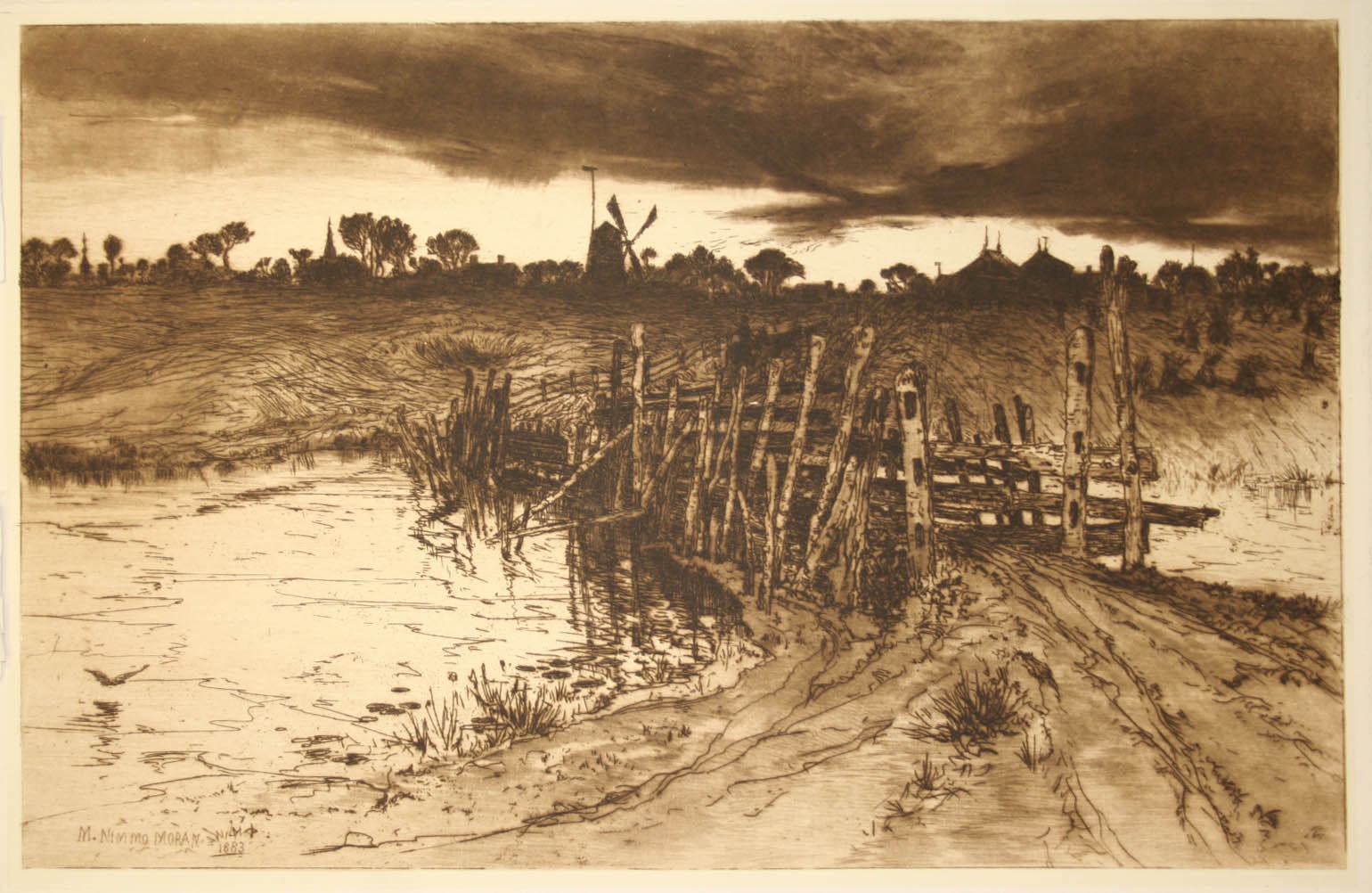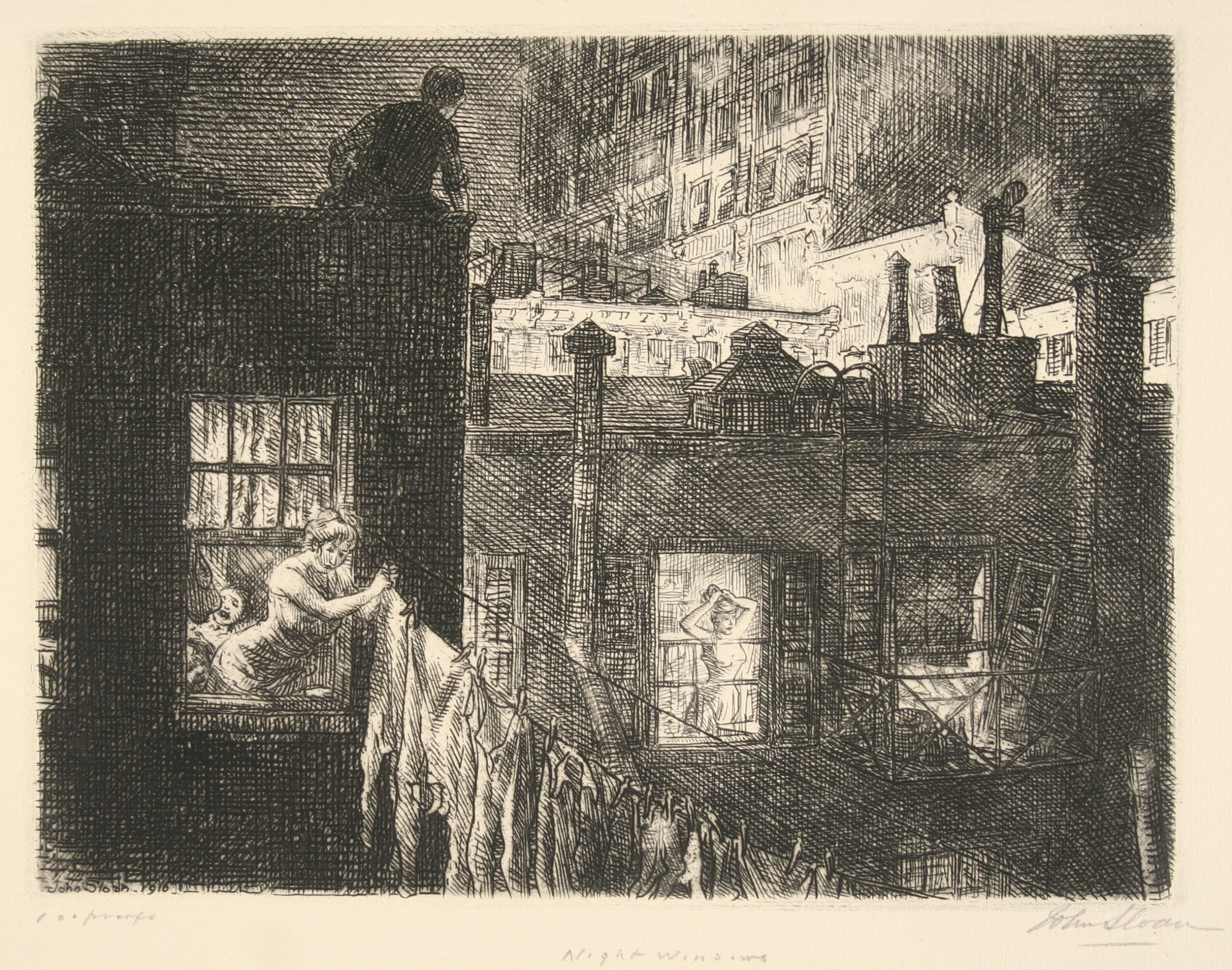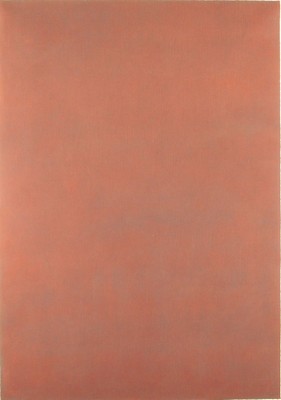Encouraged in part by their European counterparts, American artists in the late nineteenth century embraced the revival of etching. The ease of producing etchings helped to attract a diverse group of artists who adapted the printmaking technique to their individual styles and subject matter. Over the course of the next century, etching remained a popular medium for experimentation and invention for artists in the United States.
Mary Nimmo Moran was an inventive printmaker and influential interpreter of the American landscape. Widely admired for her technical expertise, Moran was at the forefront of the etching revival in the United States, becoming the first woman elected to the New York Etching Club. In this print she combines several etching techniques to produce an atmospheric image of the moment between dusk (gloaming) and darkness (mirk).
The painter and printmaker John Sloan was a central figure of the Ashcan School, a group of artists committed to depicting the gritty reality of urban life. In etchings such as Night Window, Sloan captured the daily lives and experiences of his New York neighbors. This intimate view of the city at night highlights Sloan's expertise with cross hatching, a system of parallel lines that can convey an array of tones and textures.
Primarily known for his sculpture, Hayward Oubre made art in multiple mediums that reflected his experiences as an African-American man. The etching Entanglement was made in response to an incident at the University of Iowa, when a fellow student in Oubre’s printmaking class made a racist remark about him. In the print, a black man raises a hatchet and prepares to strike a white snake. “Racism made me do that picture,” Oubre later explained. “I fought racism with my art.”
At first glance it might be difficult to see the etched lines Sol LeWitt described in the title of this set of prints. The subtle etchings exemplify LeWitt’s conceptual approach to his art, which placed more value on the idea of a work of art than its physical form. Each print is the group is distinct although they were all made following the same simple instructions. Throughout his career, LeWitt had a particular interest in the character of line, which made etching an appealing medium for his work.
The complete set of six prints is shown here installed in the Museums galleries. To view more information about the group, visit the Sol LeWitt Catalogue Raisonné.






